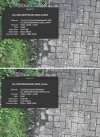Mini 4 Pro is producing choppy video. I tried swapping SD cards to no avail. Earlier I asked on this form "what is the best viewer", and tried the suggested VLC Media Player which was even worse!! You couldn't even make out what the subject of the video was.
Then I discovered the problem... my videos at default H.265 setting are basically worthless. (unless I can convert them somehow to H.264)
They look fine on the RC2 controller in the album but when I take the SD card out of the drone, transfer the video file to my computer and open it and view the MP4 files the ones recorded at H.265 are choppy like it's individual photos strung together. Anyone else discover this problem with the M4P. I didn't ave this problem with the mini 2 but I think it only offered H.264.
Then I discovered the problem... my videos at default H.265 setting are basically worthless. (unless I can convert them somehow to H.264)
They look fine on the RC2 controller in the album but when I take the SD card out of the drone, transfer the video file to my computer and open it and view the MP4 files the ones recorded at H.265 are choppy like it's individual photos strung together. Anyone else discover this problem with the M4P. I didn't ave this problem with the mini 2 but I think it only offered H.264.




.jpg)







